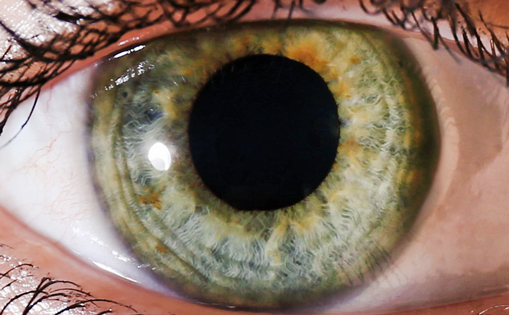Advanced phacoemulsification (phaco) technology and techniques, as well as intraocular lens (IOL) developments, have dramatically heightened expectations for the cataract patient; emmetropia and instant visual improvement without discomfort or redness is the new norm. In my opinion, few patients are specifically informed that retinal detachment occurs after 0.5–1 % of phaco procedures. Careful pre-operative examination of the peripheral retina with the indirect ophthalmoscope and laser retinopexy to all retinal breaks, except round holes within lattice degeneration, reduces post-operative retinal detachments typically attributed to myopia. Longer axial length does not directly cause retinal detachments; it is a proxy for lattice degeneration and retinal breaks coinherited with myopia.
Anterior Vitrectomy
Post-operative retinal detachments occurring after posterior capsule rupture are often preventable if posterior capsule rupture is well managed at the time of surgery. It is well known that vitreous incarceration in the cataract wound causes vitreoretinal traction leading to post-operative retinal breaks and detachment; intra-operative vitreoretinal traction caused by inappropriate techniques is underappreciated. Cellulose sponge vitrectomy, even testing for vitreous with a cellulose sponge, causes severe, instantaneous vitreoretinal traction because of the need to lift to cut with scissors, as well as because of wicking. Vitreous must be seen to be removed; triamcinolone particulate marking using preservative-free Triesence® (Alcon Laboratories) is ideal for vitreous visualization. 23-gauge, 2,500 cut/minute Ultravit® cutters are now available for the Alcon INFINITI® platform; other manufacturers offer small-gauge, relatively high-cutting-rate cutters as well. High cutting rates significantly reduce pulsatile vitreoretinal traction; smaller diameters produce port-based flow limiting, reducing pulsatile traction as well. Continuous engage and advance technique eliminates pull-back force, as well as improving vitreous:infusion fluid ratio, thereby improving efficiency. The lowest effective aspiration flow rate or vacuum level should be used to further reduce non-pulsatile traction. Infusion should always be separate from aspiration and always through a side port, not the phaco wound. Either a second side port or the pars plana should e used for the cutter. If the pars plana is selected, the cutter portmust be kept in view during the vitrectomy and an extensive anterior vitrectomy performed. Although pars plana vitrectomy is better for the corneal endothelium as well as complete removal of vitreous from the anterior segment, surgeons not comfortable with this approach should adhere to the principles described in this article to reduce traction and use separate infusion and cutters, not coaxial infusion. 23-gauge cutters offer the best compromise between flow rate and tool flexure; topical anesthesia combined with 25- or 27-gauge vitrectomy can result in retinal contact because of tool flexure due to extraocular muscle force.
Use of the cellulose sponge for anterior vitrectomy is not only unacceptable because of acute vitreoretinal traction; swelling of the sponge as it imbibes liquid vitreous uniformly results in repetitive iris trauma and traumatic iritis – a significant factor in cystoid macular edema (CME). Although iris retraction is necessary in small pupil cases, caution is necessary because iris trauma is a significant cause of CME. Vitreous removal per se does not cause CME, total pars plana vitrectomy virtually never causes it, but tissue destruction from cryopexy or excessive laser can cause CME after vitreoretinal procedures.
Dislocated Lens Material
Lens material, even dense nuclear fragments with apparent sharp edges, only damages the retina when surgically manipulated. Inappropriate removal techniques can lead to retinal breaks and detachment. The phaco handpiece should never be placed in vitreous; ultrasonic energyemulsifies hyaluronan, creating the illusion of vitrectomy, but does not shear the vitreous collagen matrix. Using the phaco in the vitreous cavity always produces unacceptable acute vitreoretinal traction. No attempt should be made to elevate lens material with a lens loop,liquid perfluorocarbon, or irrigation while vitreous is still present. Saline irrigation has been advocated to mobilize lens material from the vitreous cavity to the anterior segment; this dangerous procedureis used to create retinal detachments in the laboratory. Posterior dislocation of lens material is a clear indication for expeditious referral to a retinal specialist.
A complete pars plana vitrectomy, preferably using preservative-free triamcinolone (Triesence) for particulate marking of the vitreous, should always be performed before any attempt to remove lens material dislocated posteriorly; this approach significantly reduces vitreoretinal traction. Proper visualization is essential; a flat or wide-angle fundus contact lens or a non-contact viewing system is mandatory.Endoillumination eliminates light scattering from the cornea; microscope illumination is unacceptable for posterior vitrectomy. The phaco handpiece should not be used to remove lens material in the vitreous cavity; the 20-gauge fragmenter has the same ultrasonic power as longitudinal phaco and is the tool of choice. 25-gauge vitrectomy should be followed by enlarging the superotemporal sclerotomy with a 20-gauge microvitreoretinal (MVR) blade to introduce the fragmenter. Suction-only technique should be used to mobilize lens material to the center of the vitreous cavity before actuating linear ultrasound. The infusion should be elevated to about 65 mmHg only during aspiration to prevent very low intraocular pressure, and especially ocular collapse after occlusion break, because of the diameter disparity between 25-gauge infusion and 20-gauge, unobstructed fragmenter outflow.
Post-Operative Retinal Examination
Dilated indirect ophthalmoscopy should be performed at all post-operative visits after cataract surgery associated with vitreous loss. Early detection of retina breaks and treatment with laser retinopexy is 98 % effective in preventing retinal detachment. Detection of localized, asymptomatic retinal detachments will lead to repair before macula-off retinal detachment occurs, and better visual outcomes.
Dislocated Intraocular Lenses
Just as all vitreous should be removed before removing lens material, a complete pars plana vitrectomy should be performed before removing or repositioning an IOL dislocated posteriorly. Then the IOL can be grasped by the optic, not the haptics, repositioned in the sulcus ifthere is sufficient capsular support, or removed and replaced with an anterior chamber lens or possibly a sutured IOL. Suturing IOLs to the iris increases iritis and CME and is rarely, if ever, indicated. Suturing IOLs to the pars plana is challenging and can be complicated by decentration, choroidal bleeding, or late weakening or breakage of the suture and dislocation.
Cystoid Macular Edema
CME is often caused by iris manipulation from cellulose sponges as well as other instruments. The author believes that sub-clinical toxic anterior segment syndrome (TASS) is responsible for some cases of CME. Inflammation from endotoxins used in ultrasonic instrument cleaners, bioburden from cannula reuse, marginal-quality viscoelastics or infusion fluids and a multitude of pharmaceutical agents injected into the eye or infusion fluid additives may be factors in CME as well. Optical coherence tomography (OCT), preferably spectral-domain, not time-domain, is the best diagnostic method for CME; fluorescein angiography is unnecessary. Thickness measurements, while useful for clinical trials, can cause diagnostic errors; patients with wet age-related macular degeneration (AMD), epimacular membrane, vitreomacular traction syndrome, and macular schisis are often misdiagnosed as having CME and treated incorrectly. It is better for the surgeon to view all gray-scale slices (optical B-scans), rather than using color coding which masks these other diagnoses. 3-D reconstruction is not helpful, nor should a technician or photographer select a single image for incorporation in an electronic medical record (EMR) system for subsequent physician viewing.
Prodrug non-steroidal anti-inflammatory drugs (NSAIDs) that diffuse to the macula, as well as treating the ever-present and causative anterior segment inflammation, are very effective in CME. The author prefers nepafanac (Nevanac®, Alcon Laboratories), while others use bromfenac (Bromday™, Ista Pharmaceuticals). Donnenfeld, Solomon and Holland have emphasized the use of NSAIDs pre-operatively for one to three days and continuing NSAIDs, especially in high-risk CME patients, for six weeks or more after surgery. Difuprednate ophthalmic emulsion (Durezol™, Alcon Laboratories), a high-potency super steroid, is very effective when pulse dosed for two weeks; longer-term usage increases the frequency of steroid glaucoma.
Endophthalmitis
Clearly the emphasis should be placed on prevention of endophthalmitis as well as early detection and treatment. Use of various antibiotics in the infusion fluid and injection of vancomycin into the anterior chamber at the end of the procedure are in widespread use by experienced surgeons, although this remains a controversial subject outside the scope of this article. A ‘tap and inject’ strategy should be used any time endophthalmitis is suspected; daily or more frequent follow-up by the cataract surgeon or a vitreoretinal surgeon is necessary if a decision is made not to treat, as well as when antibiotics are injected.
Vitreoretinal Complications of Phacoemulsification
Abstract:
Overview
Many vitreoretinal complications of phacoemulsification (phaco) can be prevented by use of proper technique when managing rupture of the posterior capsule and posterior dislocation of lens material. A better understanding of the causative factors in vitreoretinal complications of phaco leads to rational, effective treatment strategies.
Keywords
Phaco, complications, retinal detachment, capsule rupture, vitrectomy, CME
Article:
Article Information:
Disclosure
Steve Charles, MD, FACS, FICS, is a consultant for Alcon Laboratories
Correspondence
Steve Charles, MD, FACS, FICS, Charles Retina Institute, 6401 Poplar Avenue, Suite 190, Memphis, TN 38119. E: scharles@att.net
Received
2011-06-27T00:00:00







